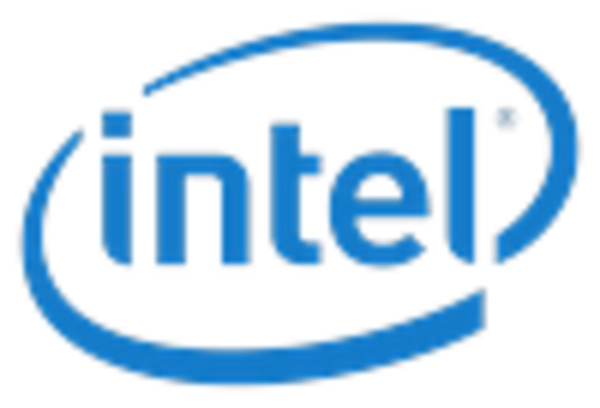Market Share
Introduction: Navigating the Competitive Landscape of Silicon Photonics
Competition in the silicon photonics market is unprecedented. It is driven by the accelerated take-up of the technology and the growing demand for fast data transmission and energy efficiency. Competition is fierce, and the main players – chipmakers, IT systems integrators, and network operators – are all striving to gain the upper hand by deploying advanced tools such as artificial intelligence-based monitoring and automation to enhance performance and reduce costs. The emergence of new players, agile AI start-ups in particular, is challenging the established order by introducing new solutions that combine the Internet of Things and biometrics, thus changing the rules of the game. In the coming years, strategic deployments will focus on sustainable development and green building to take advantage of the regulatory changes and the growing demand for eco-friendly solutions. This evolving context requires a clear understanding of the technology-based differentiators that will define the silicon photonics market.
Competitive Positioning
Full-Suite Integrators
These vendors provide comprehensive solutions integrating silicon photonics technology into broader networking and computing systems.
| Vendor | Competitive Edge | Solution Focus | Regional Focus |
|---|---|---|---|
| Infinera Corporation | Advanced optical networking solutions | Optical transport networks | Global |
| Cisco Systems Inc. | Leading networking technology provider | Networking and communication solutions | Global |
| Intel Corporation | Pioneering silicon photonics integration | Data center and computing solutions | Global |
| IBM Corporation | Innovative computing and AI solutions | High-performance computing | Global |
Specialized Technology Vendors
These companies focus on niche technologies and components essential for silicon photonics applications.
| Vendor | Competitive Edge | Solution Focus | Regional Focus |
|---|---|---|---|
| Mellanox Technologies Ltd | High-performance interconnect solutions | Data center interconnects | Global |
| Hamamatsu Photonics K.K | Expertise in photonic sensors | Photon detection and imaging | Global |
| STMicroelectronics NV | Diverse semiconductor solutions | Optoelectronics and sensors | Global |
| Finisar Corporation | Leader in optical communication components | Optical transceivers | Global |
| IPG Photonics Corporation | High-performance fiber lasers | Laser technology | Global |
| NKT Photonics | Innovative photonic crystal fibers | Fiber optics and lasers | Global |
| SICOYA | Specialized in silicon photonic circuits | Integrated photonic circuits | Global |
Infrastructure & Equipment Providers
These vendors supply the necessary infrastructure and equipment to support silicon photonics technologies.
| Vendor | Competitive Edge | Solution Focus | Regional Focus |
|---|---|---|---|
| AIO Core Co. Ltd | Custom silicon photonics solutions | Integrated photonic systems | Asia |
| DAS Photonics | Innovative photonic devices | Photonics for telecommunications | Europe |
| FLIR Systems | Advanced thermal imaging technology | Thermal imaging and sensing | Global |
Emerging Players & Regional Champions
- Lightmatter (USA): specializes in photonics-based microprocessors for AI and machine learning. It has just signed a contract with a major cloud service provider to enhance the capacity of its data center, and it has the potential to challenge the established vendors like Intel because of its superior performance and energy efficiency.
- Germany: Photonics Group: Specializes in integrated photonic circuits for telecommunications. Recently signed a contract with a European telecommunications company for the implementation of its technology in 5G networks. Complements traditional semiconductor companies with its specialized solutions for high-speed data transmission.
- Syntiant (USA): develops silicon photonic chips with ultra-low power consumption for edge computing applications. It has recently applied its technology to smart home appliances, and is aiming at the growing market for low-power AI solutions.
- Ayar Labs (USA): Optical I/O for data centers. Ayar Labs has just announced a partnership with a leading chip manufacturer to integrate its technology into the next generation of processors. Ayar Labs's technology has a major advantage over existing solutions, reducing latency and power consumption.
- Optalysys (UK): Pioneers in the field of optical computing using silicon photonics, Optalysys has recently demonstrated its technology in a high-performance computing environment. The technology complements traditional architectures and opens up a new way of processing large data volumes.
Regional Trends: In 2023 the regional use of silicon photonics is to show a notable increase, especially in North America and Europe, owing to the progress made in telecommunications and data centres. The more specialized the companies are, in the fields of artificial intelligence, telecommunications, and the edge, the more intense the competition, and the more the newcomers, with their innovations and their associations, are to disturb the established order.
Collaborations & M&A Movements
- Intel and GlobalFoundries announced a partnership to co-develop advanced silicon photonics technologies aimed at enhancing data center performance and reducing latency, thereby strengthening their competitive positioning in the semiconductor market.
- Cisco acquired optical networking firm Acacia Communications to bolster its silicon photonics capabilities, aiming to expand its portfolio in high-speed data transmission and improve market share in the telecommunications sector.
- IBM and Lightwave Logic entered into a collaboration to develop next-generation silicon photonic devices for quantum computing applications, positioning themselves at the forefront of innovation in the rapidly evolving quantum technology landscape.
Competitive Summary Table
| Capability | Leading Players | Remarks |
|---|---|---|
| High-Speed Data Transmission | Intel, Cisco, IBM | Intel has made great strides with its silicon photonics technology, reaching speeds of up to 100Gb/s. But the real proof of the pudding is in the eating, and Cisco is now deploying silicon photonics in its data center interconnect solutions, which demonstrates its commitment to high-speed networks. With its integration of silicon photonics with traditional silicon-based electronics, IBM has also developed prototypes that have greatly improved the speed of data transmission. |
| Integration with CMOS Technology | Intel, GlobalFoundries | Intel’s ability to combine silicon photonics with its CMOS technology has made it the market leader. Also pursuing this strategy is GlobalFoundries, which is developing a manufacturing process that will allow for the seamless integration of photonic devices with conventional ICs. Its recent collaborations with various high-tech companies are a good indication of this. |
| Cost-Effective Manufacturing | Luxtera, Ayar Labs | Luxtera has developed the most cost-effective manufacturing techniques for silicon photonics, enabling a significant reduction in cost while maintaining performance. Ayar Labs focuses on developing optical interconnections for chips that promise lower cost and higher performance, as demonstrated in their collaborations with the major IT companies. |
| Scalability for Data Centers | Cisco, Mellanox Technologies | Cisco’s silicon photonics solutions are designed for scalability, so they can be used to increase the capacity of a data centre without any major changes to its underlying hardware. Mellanox has developed scalable optical interconnects with high data rates that have been successfully used in large data centres. |
| Energy Efficiency | IBM, Intel | IBM's research on silicon photonics has led to new developments that greatly reduce the power consumed in data transmission. Intel's silicon photonics technology is also renowned for its low power consumption, which makes it a favorite in data centers. |
Conclusion: Navigating the Silicon Photonics Landscape
Competition in the silicon photonics market in 2023 is fragmented. Both established and new players are competing for dominance. The established companies rely on their experience and financial resources, while new entrants are disrupting established business models with their innovations. In the regions, the trend is towards a stronger emphasis on AI, automation, and the environment. Vendors are responding to evolving market requirements. The strategic importance of this is that the ability to be flexible and responsive to customer needs will be a key determinant of market leadership. As the industry evolves, the companies that focus on this capability will be better able to seize opportunities and cope with the complexities of this rapidly evolving market.















Leave a Comment